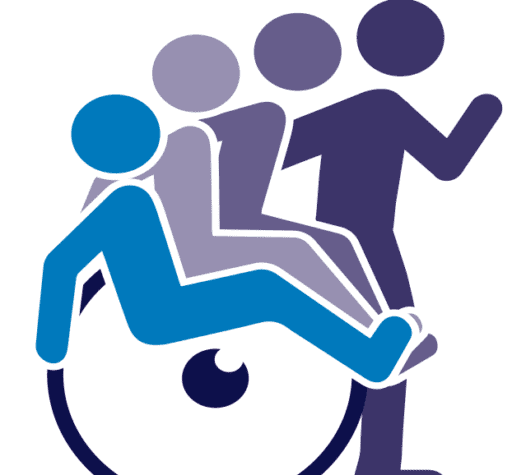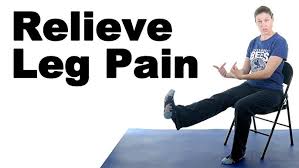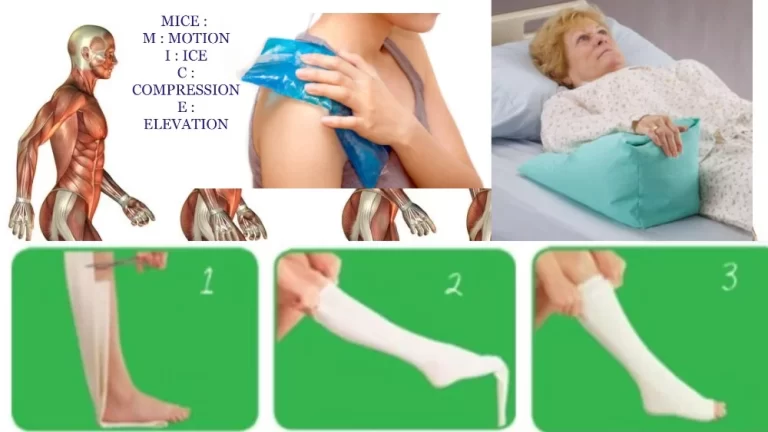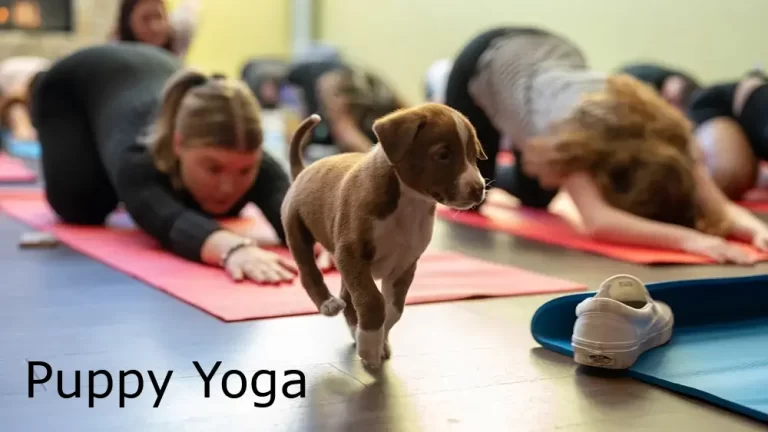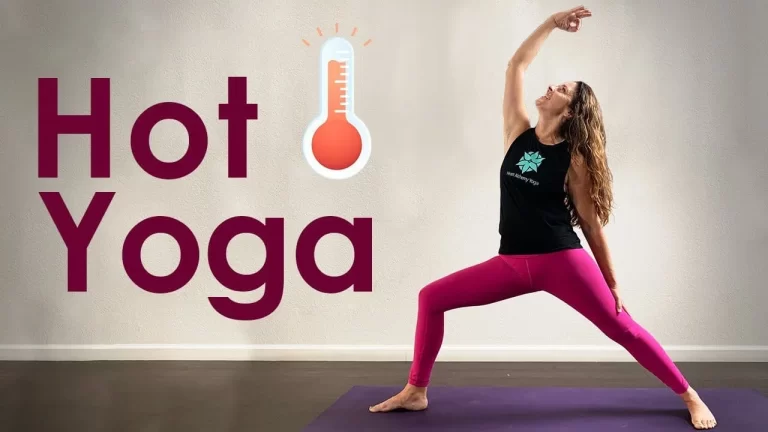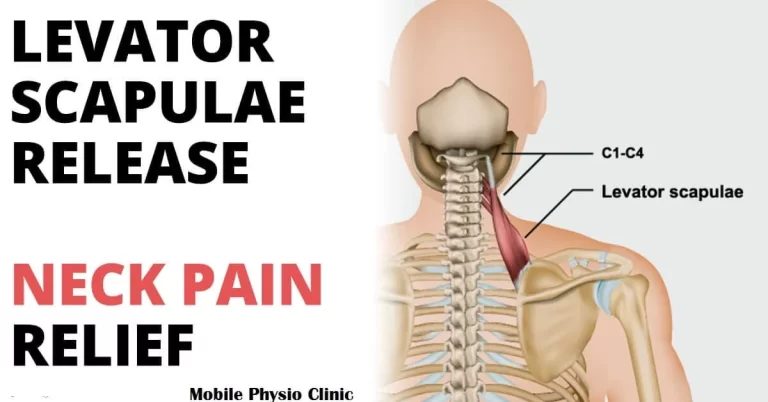7 Best Exercises for Leg Muscle Pain Relief
Table of Contents
Introduction:
Leg muscle pain is a common issue caused by overuse, strain, poor posture, or lack of flexibility. Simple stretching and strengthening exercises can help relax tight muscles, improve circulation, and speed up recovery.
Frequent repetition of specific actions strengthens the muscles and reduces pain, thereby averting further strain. The top 7 leg muscle exercises that effectively relieve leg pain and support long-term muscle health will be discussed in this post.
Benefits of the Top 7 Leg Muscle Pain Relief Exercises:
- Improves Blood Circulation: Mild motions improve blood flow to the legs, which lessens muscular fatigue, stiffness, and edema.
- Reduces Muscle Tension: Mobility drills and stretches help release tense muscles, which lessens pain and cramping.
- Improves Mobility & Flexibility: Consistent practice expands joint range of motion, which facilitates pain-free and simpler everyday activities.
- Strengthens Leg Muscles: By strengthening the quadriceps, hamstrings, calves, and glutes, specific workouts help to avoid further injuries.
- Lessens Stiffness & Inflammation: This aids in the removal of lactic acid and lessens inflammation, which is a factor in leg pain.
- Promotes Quicker Recovery: This is perfect for persons recuperating after strenuous exercise, lengthy walks, or standing employment since it speeds up the healing process.
- Prevents Future pain: By enhancing posture, balance, and muscular endurance, stretching and strengthening reduce the likelihood of recurrent leg pain.
7 Best Exercises for Leg Muscle Pain Relief:
Hamstring Stretch:
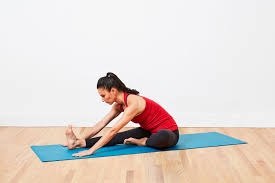
An effective workout for reducing back thigh pain and strain is the hamstring stretch. By gradually lengthening the hamstring muscles, this stretch increases flexibility and decreases stiffness.
You may improve circulation, reduce post-exercise pain, and increase leg mobility by performing the hamstring stretch daily. It is a straightforward yet effective workout for leg pain alleviation since it promotes improved posture and lowers the chance of muscle injuries.
Quadriceps Stretch:
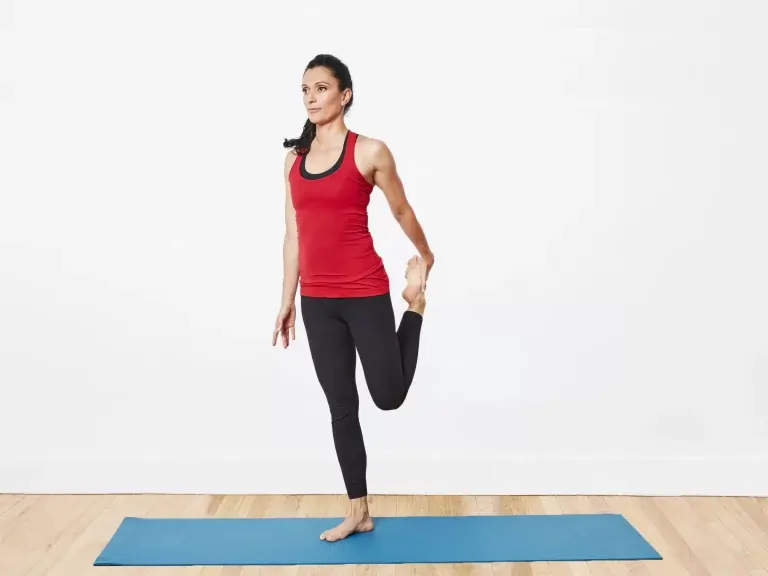
The quadriceps muscles, which frequently grow tight after extended sitting, jogging, or cycling, are the focus of this stretch. It aids in increasing flexibility, lowering stress, and reestablishing equilibrium between the front and rear legs by gradually stretching these muscles.
In addition to relieving pain, regular quadriceps stretches improve mobility, promote knee joint health, and reduce the chance of injury. It’s a great way to maintain strong, supple leg muscles and encourage relaxation.
Calf Stretch:
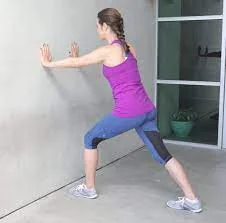
A great exercise for reducing lower leg pain and stiffness is the calf stretch. Walking, jogging, or standing for extended periods can cause tight calf muscles, which can lead to pain in the ankles, feet, and even the knees. This stretch promotes flexibility, increases blood flow to the lower legs, and lengthens the calf muscles.
Regular practice promotes improved mobility and balance while easing pain and stiffness. The calf stretch is essential for maintaining the health of your legs since it may also help avoid problems like cramps, plantar fasciitis, and Achilles tendon strain.
Lunges:
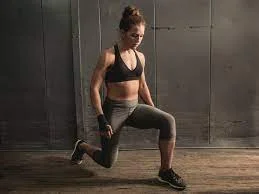
Lunges are a potent workout that can aid with leg pain relief as well as the simultaneous strengthening and stretching of several lower-body muscles. This exercise improves general muscular balance and stability by working the quadriceps, hamstrings, calves, and glutes.
Additionally, they increase joint mobility, particularly in the hips and knees, and strengthen the core. Because they improve strength, endurance, and posture in daily tasks, lunges are a great way to avoid future leg problems.
Straight Leg Raise:
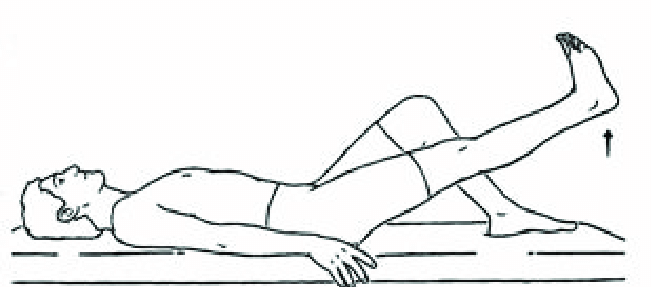
A straightforward but efficient exercise that helps build hip flexor and quadriceps strength without overtaxing the joints is the straight leg raise. This exercise is particularly helpful for easing leg pain caused by weak muscles or knee issues. Maintaining a straight leg when lifting increases muscular endurance, circulation, and thigh muscle activation.
In addition to reducing pain, regular straight leg lifts help maintain knee stability, avoid stiffness, and improve mobility. It is a mild workout that is safe for novices and very effective for rehabilitation and pain management.
Side-lying hip abduction:
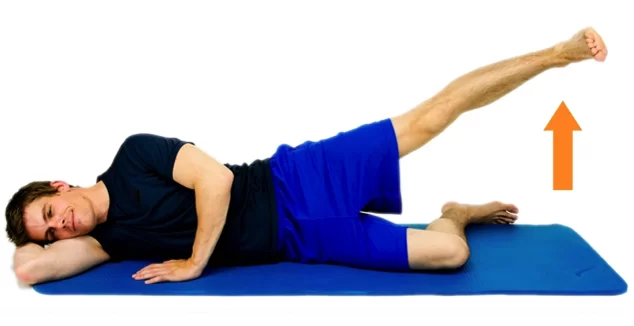
The inner thigh muscles, which are frequently disregarded yet are essential for leg stability and pain management, can be strengthened with the side-lying hip abduction. This exercise works the adductor muscles, which enhance balance, coordination, and leg strength by raising the lower leg upward while you’re on your side.
Strong adductors make everyday motions easier and more pleasant by easing the pressure on the knees, hips, and lower back. Frequent side-lying hip adduction exercises improve flexibility, avoid muscular imbalances, and promote improved joint health in addition to relieving leg strain.
Prone Hip Extension:

By strengthening the gluteal and hamstring muscles, the Prone Hip Extension is a mild yet effective exercise that helps reduce lower back and leg pain. By raising one leg upward while resting face down, this exercise strengthens the posterior chain and increases hip stability.
Strengthening these muscles improves circulation in the legs, eases stiffness from extended sitting, and lessens strain on the lower back. By enhancing muscular balance and endurance, regular prone hip extension practice helps to improve posture, maintain pelvic alignment, and ward off potential leg pain.
Knee Extension Exercise:
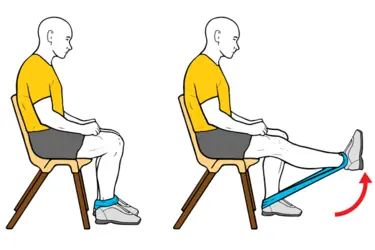
The quadriceps muscles, which are crucial for knee support and general leg function, may be strengthened with the help of the Knee Extension Exercise. This exercise, which involves straightening the leg from a bent posture, helps increase muscular endurance, lessen load on the knee joint, and ease pain from stiffness or weakness.
Additionally, it improves circulation in the lower limbs, which facilitates pain or injury rehabilitation. Knee extensions are a useful exercise for leg pain treatment and rehabilitation since they improve mobility, promote improved balance, and ward off potential knee-related problems.
Supine Cycling Exercise:
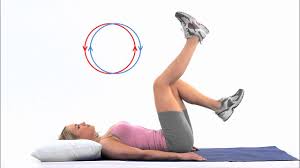
Lying on your back and simulating the pedaling motion of a bicycle, the Supine Cycling Exercise is a mild yet efficient exercise. This exercise helps relieve muscle soreness from overuse or inactivity, enhances blood circulation in the legs, and lessens stiffness. It strengthens and stretches the lower body by working the quadriceps, hamstrings, calves, and hip flexors.
Additionally, supine cycling improves core stability, promotes joint mobility, and offers a low-impact method of maintaining leg activity. Frequent practice is great for leg pain alleviation and recuperation since it reduces soreness, avoids cramping, and increases general endurance.
Calf Raise:
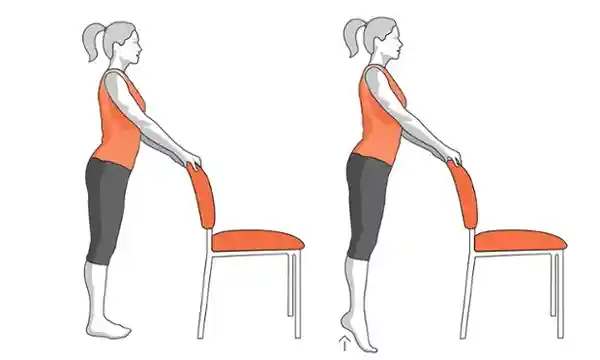
This exercise improves blood flow, promotes flexibility, and lessens calf muscle pain by raising the heels off the ground and standing on the toes. Regular calf raise practice reduces the chance of injury by strengthening the ankles, improving balance, and relieving pain.
Because it avoids stiffness, encourages improved mobility, and enhances general leg health, it is especially advantageous for persons who stand or walk for extended periods.
Conclusion:
You may greatly lessen pain, increase flexibility, and rebuild lower-body strength by including these seven top leg muscle pain treatment exercises into your regular regimen. Your legs will feel lighter and more agile as a result of each exercise’s ability to reduce stiffness, improve circulation, and maintain joint health.
These easy yet powerful exercises help you keep your legs strong, healthy, and pain-free by preventing future muscle problems and relieving current pain with consistent practice.
FAQs:
Because exercise increases flexibility and strengthens the muscles supporting the knee joint, stair climbing may be good for knee health. However, for people with certain knee ailments or injuries, it can also be painful, particularly while descending.
Seeing a physician who can assist in identifying the reason for your knee pain is beneficial to choose the best course of action. Physicians who can assist in treating your pain include rheumatologists, orthopaedic surgeons, sports medicine specialists, and primary care physicians. To learn what each of them does, continue reading.
Although overuse, arthritis, and injuries are frequently linked to knee pain, research indicates that a deficiency in vitamin D may weaken bones and joints, which can result in pain, even in the knees.
Maintaining an active lifestyle with low-impact workouts, strengthening the knee muscles, keeping a healthy weight, and placing a high priority on good posture and body mechanics are all essential for reducing knee pain in old age.
When muscles feel tight and difficult to move, especially after resting, this is known as muscular stiffness. They may get painful as a result. An injury or strain, an infection, or the use of medicine are all potential reasons.
Muscle strains, nerve disorders like sciatica, blood flow difficulties like peripheral artery disease (PAD), and even bone-related disorders like fractures or arthritis can all cause leg pain. To assist in identifying possible reasons and seeking the right medical care, it’s essential to take into account the particulars of the pain, such as its location, kind, severity, triggers, etc.
Ibuprofen (Advil, Motrin) and naproxen (Aleve) are typically regarded as appropriate choices for mild to moderate muscular pain since they effectively reduce both pain and inflammation. Although acetaminophen (Tylenol) can not lessen inflammation, it can also be useful in treating pain. A doctor could prescribe a muscle relaxant or other painkiller if your pain is more severe or chronic, or if you have underlying medical issues.
It may be just as helpful as certain NSAIDs in reducing pain and improving function in people with osteoarthritis in their knees, according to studies. To find the ideal dosage, frequency, and composition for the greatest outcomes, additional study is necessary.
There are several more recent approaches to treating knee pain, with an emphasis on biological medicines and less invasive procedures. Injections of PRP and viscosupplementation with hyaluronic acid are also being investigated for pain management.
Endorphins, the body’s natural painkillers, are perhaps the most potent since they directly interact with the neurological system to block pain signals; however, the term “strongest” is subjective and depends on the nature and origin of pain. Through various processes, other natural compounds such as CBD, ginger, and turmeric can provide considerable pain relief.
Leg pain can result from several vitamin and mineral deficiencies. Deficits in calcium, vitamin B1 (thiamine), vitamin D, vitamin B12, and electrolytes, including potassium, sodium, magnesium, and iron, are among them.
Depending on personal biomechanics, pre-existing problems, and squat depth, squats may cause injury to the cartilage in the knee. Particularly deep squats can put more strain on the knee joint and perhaps cause cartilage injury. However, when done properly and with the right adjustments, squats may also be good for knee health.
Iliotibial band syndrome or tendinitis can result from excessive usage. Knee pain can also be caused by other disorders such as patellofemoral pain syndrome, displaced kneecaps, and bursitis.
Exercises that increase flexibility and strengthen the surrounding muscles (quadriceps, hamstrings, calves, and glutes) are the best way to strengthen your knees. Knee health can also be improved by keeping a healthy weight and engaging in joint-friendly activities.
Common causes include tendinitis, stress fractures, muscle spasms, sprains, and strains. Nerve disorders, blood flow abnormalities, and even some drugs or vitamin deficits are other possible reasons.
Wall Stretches
Maintaining your front foot level on the ground, extend your rear leg straight out with your heel up until just your toes contact the floor. After 30 seconds of holding this posture, switch legs.
References:
- Tegna, W. (2019, February 26). 9 Stretches and Exercises for Leg Pain Relief | Spine Works Institute. Spine Works Institute. https://www.dfwback.com/9-stretches-and-exercises-for-leg-pain-relief/
- Admin. (2019a, April 3). At-home workouts to relieve leg pain. The Vascular Institute of Birmingham. https://new-legs.com/at-home-workouts-to-relieve-leg-pain/
- NHS inform. (2025, February 7). Exercises for thigh muscle and joint problems | NHS inform. NHS Inform. https://www.nhsinform.scot/illnesses-and-conditions/muscle-bone-and-joints/leg-and-foot-problems-and-conditions/exercises-for-thigh-problems
- Leg exercises. (2021, November 16). Arthritis Foundation. https://www.arthritis.org/health-wellness/healthy-living/physical-activity/getting-started/your-exercise-solution/lower-body-movements/leg-movements
- Admin, M. (2024, January 19). Lower leg pain exercises. Medi-Dyne. https://medi-dyne.com/blogs/exercises/lower-leg-pain-exercises?srsltid=AfmBOoo0c319eNhPHDyglOuvCeU6qnPib86jsGryfBvzcq4XAvwYDryf
